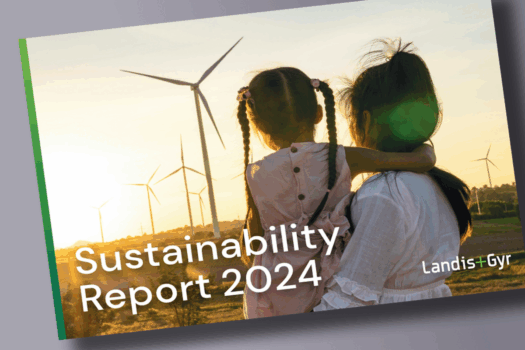What companies should know about it
In 2022, companies will no longer have the choice about addressing ESG. Regulatory and economic expectations are already in place and must be met. In this context, financial markets carry special weight. While in the past only listed companies had to submit ESG reports, the Corporate Sustainability Reporting Directive (CSRD) also affects those companies that only have contact with financial markets through their principal bank. The aim is to provide financial market players, be they loan officers or financial analysts, with good and reliable ESG data that clearly relate to the company’s values and enable relevant assessments.
I. ESG – a necessity
Issues such as climate change, biodiversity and species extinction have long since arrived in the societal consciousness and are no longer considered esoteric or exotic. Consumers are increasingly buying organic products; more and more electric vehicles are driving on our roads, and images of droughts and floods seem to have become permanent fixtures in the news. This global trend now permeates well beyond consumer behavior, and so sustainability has become the driving force behind a number of regulatory and legislative measures for companies in recent years.
With the Corporate Sustainable Reporting Directive (CSRD), many companies that have not yet had to deal with sustainability will, in the foreseeable future, become debutantes of sustainability reporting. This is because the CSRD sets the threshold relatively low at a commitment from companies that meet two of these three criteria: Sales greater than €40 million, more than 250 employees, or total assets greater than €20 million. And even though the CSRD will come into force in phases, and small- to medium-sized companies will have to report on their fiscal year 2025 for the first time in 2026, this timeline may be misleading. This is because a pattern is emerging among large companies and corporations, according to which supply chains are subjected to similarly rigorous scrutiny as the company itself. In plain language, this means that suppliers who cannot or do not want to report on their own sustainability performance may find themselves having to quickly step up due to their role in the supply chain of a larger company.
II. ESG – an issue for lenders in the future
For the latter reason in particular, it would be wrong to dismiss sustainability as a regulatory phenomenon. In the financial market, for example, the trend toward sustainable finance is being driven in response to or despite of regulatory requirements, and more and more conventionally oriented investors are also using ESG data in their investment decisions. It is well known that investors put companies through their paces and are fundamentally interested in the risks and increasingly the opportunities arising from sustainable or non-sustainable activities of their investments.
What is new, however, and entrepreneurs should prepare, is that lenders are also looking at sustainability opportunities and risks. Whereas companies previously had to provide their balance sheet, income statement and cash flow statement annually to their principal bank as part of their credit rating, they also will be asked to provide sustainability data.
For companies that are considered financial market-oriented, such as listed companies or issuers of bonds, there is no alternative: ESG must be integrated into their capital market communication. But ESG also will become important in the future for those companies that finance themselves through loans or merely have a line of credit, as an indicator of good corporate governance. Fundamentally, banks are looking for companies that do not incur ESG risks, which the bank assumes through a loan. Aside from that, companies are giving away opportunities to position themselves and differentiate themselves from their competitors by not prominently communicating their sound and credible ESG practices to investors and lenders.
III. Avoid ESG “data deserts”
The target audience for financial market communication is credit officers, investors and financial and rating analysts. These people need to quickly assess companies and their expected quality of future performance and potential risk. Performance and risk are now affected not only by economic performance, but also ESG activities – and, increasingly, the connection between these two dimensions of success. To forecast the future success of companies, financial market experts need relevant data, but also information on qualitative content and context – ideally, data that is concise, succinct and easy to find. Companies should therefore integrate ESG into their financial communications.
As a rule, credit analysts and investors can cope with the flood of corporate data only by reading reports and analyses in a cursory manner and often with only fundamental corporate data. In doing so, they select information from business and sustainability reports according to their diagnostic value. It is advisable to provide financial market experts with quick-reading tools for all data in general, but especially for ESG data, such as graphs, tables, summaries and listings.
Research shows that lenders and investors are open to non-financial information like ESG if it tells a “story” or is offered in formats that can quickly be consumed.
IV. Information formats for ESG data
The financial market story, often referred to as the equity story, is an important instrument of capital market communication. It talks about company-specific success factors and the company’s strategy, industry and competition, but also about strategic challenges in the industry and how the company is addressing these challenges. A credible presentation that embeds the ESG strategy into the financial market story is therefore a key characteristic of a convincing capital market communication.
The challenge with integrating ESG into the financial market story, however, is that it is based on an economic narrative. If an ESG aspect is strategically interwoven into the financial market story, it must be possible to derive an economic impact from it that has a positive effect on the market position and improves future opportunities. Looking at the issue from a purely ethical and societal perspective is not sufficient here.
A second and often underestimated instrument in financial market communication is the so-called analyst presentation. It combines parts of the equity story and the financial report and often serves as supplementary information during conference calls, such as quarterly company reports. Investors often use it to quickly scan a company for concise performance data.
The ESG strategy and the resulting relevant data should also be embedded in the analyst presentation, for reasons of credibility. Otherwise, the question arises as to how great the company’s ESG conviction really is and whether addressing the issue is purely for regulatory reasons or even as a greenwashing attempt. Companies should try to find the right balance between the necessary breadth of content and the digestible brevity of ESG presentations.
A third vehicle for communicating ESG to the capital market is a so-called ESG factbook. These are ESG data catalogs, increasingly available in machine-readable formats, which are precisely tailored to the needs of sustainability-conscious investors and specialized sustainability rating analysts. Sustainability rating analysts are often underestimated as a target group. Lenders and investors often use data collected by ESG rating agencies, as they themselves would often not be able to process the ESG data of all companies represented in the investment universe in terms of time and content.
V. Conclusion
If companies are serious about sustainability, then there is no reason why reports on their opportunities and risks, their sustainability activities and measures should have a shadowy existence in subordinate sections on websites or in hard-to-find sustainability reports. Financiers are interested in companies with value and values, companies that are reliable and want to know and expand their contribution to society. These motives can be well served by sustainability reporting, provided that sustainability reports and data are substantial and credible. Sustainability in the form of “marketing messages” is misplaced and can destroy credible messages.
This article has first been published in BOARD, Journal for Supervisory Boards Germany (German only).
Get in touch. We are happy to tell you more about it.





